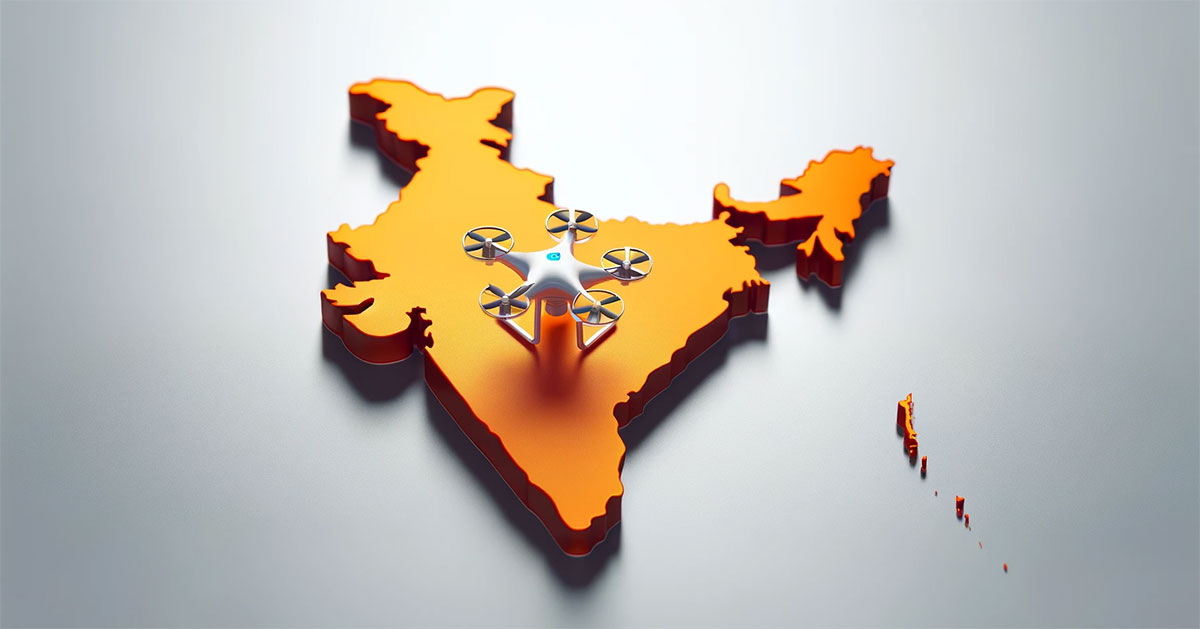How To Start A Successful Dropshipping Business in India

Introduction to Dropshipping Business in India
What is Dropshipping?
Have you ever wondered how a business can sell products without actually keeping a stock of them? That’s where dropshipping comes in! This innovative business model allows you to sell products directly to customers without holding any inventory. When a customer places an order, you purchase the item from a third party, who then ships it directly to the customer. It’s like being the middleman, but with a lot of perks!
The Growing Importance of Dropshipping in India
In India, where e-commerce is booming, dropshipping has become a golden opportunity for entrepreneurs. It’s not just about selling products; it’s about tapping into a vast market with minimal investment. With a large and diverse population, India presents a fertile ground for dropshipping businesses to thrive. The low startup costs and the ability to test products without hefty investments make it an attractive business model.
Benefits of Dropshipping in India
Why choose dropshipping in India? For starters, it’s cost-effective. You don’t need a warehouse to store products, which slashes overhead costs significantly. It’s also incredibly flexible – you can run your business from anywhere with an internet connection. Plus, with the ability to offer a wide range of products without large investments, you can quickly adapt to market trends and customer preferences.
Understanding the Concept of Dropshipping

What Dropshipping Really Involves
Dropshipping isn’t just about selling products; it’s a unique dance between three key players: suppliers, retailers, and customers. As a retailer, you get to showcase various products on your online store. When a customer orders, the supplier takes the lead, shipping the product directly to the customer. It’s a seamless process that eliminates the need for inventory, making it a low-risk and high-reward model for business enthusiasts.
The Crucial Role of Suppliers
In the dropshipping model, suppliers are the unsung heroes. They are responsible for maintaining product quality, managing inventory, and ensuring timely delivery. A reliable supplier is not just a vendor; they are your business partner. In India’s diverse market, finding the right supplier who understands local preferences can be the difference between success and failure.
Retailers and Customers: The Frontline
As a retailer, your role is to bridge the gap between suppliers and customers. You’re the face of your business, responsible for attracting customers and providing them with a smooth shopping experience. Customers, on the other hand, are looking for quality products and seamless service. Understanding their needs and preferences is key to building a successful dropshipping business in India.
Why Start a Dropship Business in India?

Exploring the Potential of Dropshipping in the Indian Market
India’s e-commerce landscape is ripe with opportunities, and dropshipping fits right in. The country’s vast and diverse population offers a wide range of market niches to explore. From fashion to tech gadgets, the potential for finding your niche and capitalizing on it is enormous. The growing internet penetration and digital literacy in India further fuel this potential, making it an ideal time to start a dropshipping business.
Success Stories that Inspire
India has witnessed several dropshipping success stories, serving as a testament to the model’s viability in the Indian market. These stories often involve entrepreneurs who started with little capital but a clear vision. They showcase the power of a well-chosen niche, smart marketing, and a customer-centric approach. These narratives are not just inspiring; they offer valuable lessons and strategies for new entrants in the field.
The Economic Advantage of Dropshipping in India
One of the most compelling reasons to start a dropshipping business in India is the economic advantage. With lower operational costs compared to traditional retail, dropshipping offers a higher profit margin. The ability to operate remotely means you can tap into markets across the country without the need for physical presence. This aspect is particularly advantageous in a country as vast as India, where geographical reach can be a challenge for traditional businesses.
Legal Requirements for Starting a Dropship Business in India

Understanding the Legal Framework
Embarking on a dropshipping venture in India requires a solid understanding of the legal landscape. This involves familiarizing yourself with the laws and regulations governing e-commerce and online businesses. Navigating through the legalities from the onset ensures your business operates smoothly and avoids any potential legal hurdles.
This website “https://www.mca.gov.in” is the official site of the Ministry of Corporate Affairs (MCA) in India. The Ministry of Corporate Affairs is a government ministry in India that primarily deals with the regulation and administration of corporate affairs in the country. This website serves as a comprehensive resource for information and services related to the incorporation, regulation, and reporting of companies and corporate entities in India.
The website deals with the following aspects of running a business in India
- Company Services: Information and online services related to the incorporation, registration, and management of companies in India. This includes filing annual returns, accessing public documents, and updating company information.
- e-Filing and Forms: Facilities for electronic filing of various forms and documents required for compliance with the Companies Act and other corporate laws.
- Data and Reports: Access to public records, data, and reports related to corporate entities in India.
- Laws and Rules: Information on the legislative framework governing corporate entities, including the Companies Act, LLP Act, and other related laws and rules.
- Investor Services: Resources and information for investors, including how to verify company details, report grievances, and access investor education and protection.
- News and Updates: Latest news, notifications, and updates from the Ministry of Corporate Affairs.
Necessary Licenses and Registrations
To legally operate a dropshipping business in India, certain licenses and registrations are mandatory. This includes obtaining a GST (Goods and Services Tax) registration, which is crucial for any business engaging in the sale of goods and services in India. Additionally, depending on your business structure, you may need to register your company. It’s important to consult with legal experts to understand the specific requirements for your business.
The following links provide more detailed information regarding The Indian GST Goods and Services tax.
- GST Goods and Services Rates on CBIC-GST: This page provides comprehensive information about the Goods and Services Tax (GST) rates for various goods and services in India. It categorizes items under different tax slabs, such as 0%, 5%, 12%, 18%, and 28%. The page is a resource for understanding the tax structure under GST, offering details about the rates applicable to different categories of goods and services.
https://cbic-gst.gov.in/gst-goods-services-rates.html - GST Law on ClearTax: This page offers a detailed overview of the Goods and Services Tax (GST) law in India. It covers various aspects of GST, including its history, features, and the impact it has on businesses and the economy. The page also provides insights into the registration process, tax rates, compliance requirements, and the filing of GST returns. It serves as a guide for understanding the legal framework and operational aspects of GST in India.
https://cleartax.in/s/gst-law-goods-and-services-tax - GST in India on Shopify: This guide is specifically designed for merchants in India using Shopify. It explains the Goods and Services Tax (GST) that took effect in India on July 1, 2017, replacing various central and state taxes. The guide covers essential topics such as GST registration requirements, differences between IGST, CGST, and SGST, and how to set up taxes in Shopify. It emphasizes the need for consulting a tax advisor for compliance and provides initial settings for taxes in India on the Shopify platform. The guide also addresses how to ensure correct tax settings and issues related to tax rates and exemptions.
https://help.shopify.com/en/manual/taxes/india-gst
Compliance with Consumer Protection Laws
In India, consumer protection laws are stringent, and adhering to them is non-negotiable for any business, including dropshipping. These laws are designed to safeguard the interests of customers and ensure fair trade practices. As a dropshipper, understanding and complying with these laws, especially in terms of product quality, returns, refunds, and customer grievances, is crucial for building trust and credibility.
Identifying Your Niche for Dropshipping in India
The Importance of Choosing a Niche
Selecting the right niche is the cornerstone of a successful dropshipping business in India. It’s not just about what you sell; it’s about selling what resonates with a specific group of customers. A well-chosen niche allows you to focus your marketing efforts, build a loyal customer base, and stand out in the competitive e-commerce landscape.
Researching Market Trends
To identify a profitable niche, thorough market research is essential. This includes analyzing current trends, understanding consumer behaviors, and identifying gaps in the market. Look for products that are in demand but not overly saturated in the market. Leveraging tools like Google Trends and social media analytics can provide valuable insights into what Indian consumers are currently interested in.
Assessing Profitability and Scalability
While passion for a product is important, assessing its profitability and scalability is crucial. Consider factors like product pricing, shipping costs, and competition. A niche with a healthy margin and the potential for growth can set the foundation for a sustainable and scalable dropshipping business.
Finding Reliable Suppliers for Your Dropship Business in India

Evaluating Supplier Reliability
A reliable supplier is integral to your dropshipping business. They should not only provide quality products but also ensure timely and efficient shipping. Evaluating suppliers involves checking their track record, product quality, fulfillment times, and customer service. Establishing a good relationship with your suppliers can greatly impact the success of your business.
Sourcing Suppliers Locally and Internationally
In India, you have the option to source suppliers both locally and internationally. Local suppliers can offer faster shipping times and easier communication. However, international suppliers, especially from countries like China, can offer a wider range of products at competitive prices. Weighing the pros and cons of each option is key to making an informed decision.
Using Supplier Directories and Platforms
Leveraging supplier directories and B2B platforms can simplify the process of finding reliable suppliers. Platforms like Alibaba, IndiaMART, and TradeIndia are popular choices for sourcing products. They provide a vast array of options and the opportunity to compare suppliers based on reviews, ratings, and product offerings.
Setting Up Your Dropshipping Store

Choosing the Right E-commerce Platform
Selecting the right platform for your dropshipping store is crucial. Platforms like Shopify, WooCommerce, and Magento offer a range of features tailored for e-commerce, including dropshipping integrations. Consider factors like ease of use, customization options, payment gateways, and scalability when choosing your platform.
Designing Your Online Store
The design of your online store should be user-friendly and visually appealing. It should reflect your brand identity and make the shopping experience seamless for customers. Prioritize easy navigation, clear product descriptions, high-quality images, and a smooth checkout process.
Integrating Dropshipping Tools
To streamline your dropshipping business, integrating tools and apps that automate various processes is beneficial. Tools for inventory management, order processing, and customer service can enhance efficiency and allow you to focus on growing your business.
Marketing Strategies for Your Dropship Business in India

Understanding the Importance of Marketing
In the competitive world of e-commerce, effective marketing can set your dropshipping business apart. It’s not just about selling products; it’s about creating a brand presence and connecting with your target audience.
Digital Marketing Tactics
Leveraging digital marketing tactics is essential for reaching your target audience in India. This includes search engine optimization (SEO), social media marketing, email marketing, and pay-per-click advertising. Tailoring your marketing efforts to suit the preferences of your niche audience can yield better engagement and conversion rates.
Utilizing Influencer Collaborations
Influencer marketing can be particularly effective in the Indian market. Collaborating with influencers who resonate with your target demographic can increase brand visibility and credibility. It’s a powerful way to reach potential customers through trusted and influential voices.
Managing and Scaling Your Dropship Business in India

Effective Management Practices
Managing a dropshipping business involves overseeing various aspects like order processing, customer service, and supplier relations. Implementing efficient management practices and leveraging technology for automation can help in maintaining a smooth operation.
Overcoming Common Challenges
Dropshipping comes with its set of challenges, including inventory management, shipping delays, and customer satisfaction. Developing strategies to address these challenges proactively is crucial. This includes maintaining clear communication with suppliers and customers, and constantly evaluating and improving your processes.
Strategies for Scaling Up
Scaling your dropshipping business involves expanding your product range, exploring new markets, and increasing your marketing efforts. Continuously analyzing market trends and customer feedback can guide your decisions on scaling. It’s also important to ensure your supply chain and customer service can handle the increased volume without compromising quality.
Conclusion: The Future of Dropshipping in India
The Growth Trajectory of Dropshipping
The future of dropshipping in India looks promising, with the e-commerce sector continuing to grow. Advances in technology and the increasing shift towards online shopping present a fertile ground for dropshipping businesses to flourish.
Final Thoughts and Advice
For aspiring dropshippers in India, the journey is full of opportunities and challenges. Staying informed, being adaptable, and maintaining a customer-centric approach are key to success. As the market evolves, so should your strategies, ensuring your dropshipping business not only survives but thrives in the dynamic Indian e-commerce landscape.





